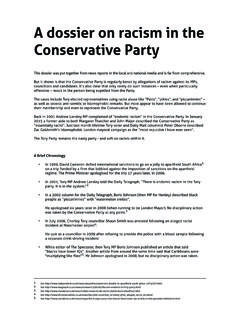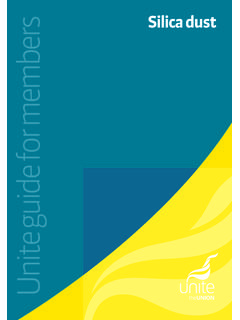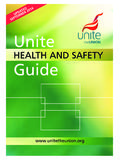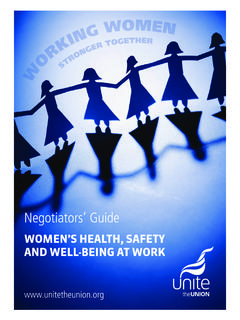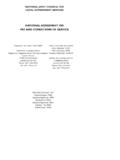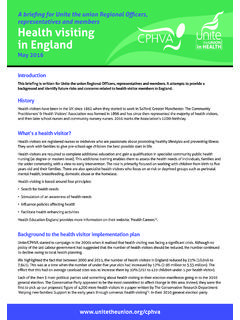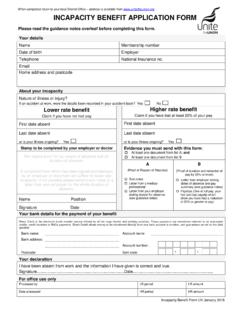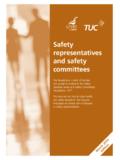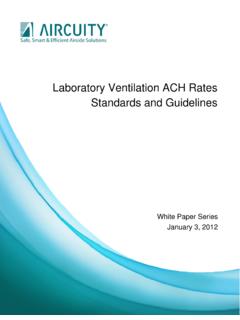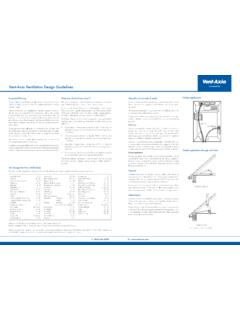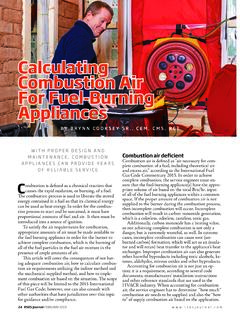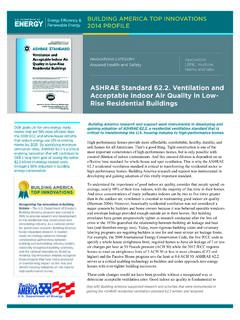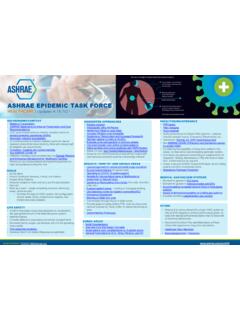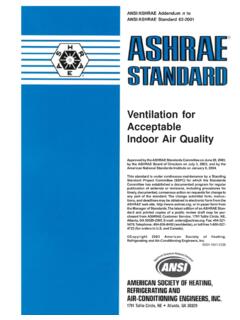Transcription of Covid-19 Guide on Ventilation and CO2 monitoring
1 Unite Covid-19 Guide on Ventilation and CO2 monitoring | P a g e 1 Covid-19 Guide on Ventilation and CO2 monitoring Ventilation and CO2 measurements to combat airborne Covid-19 contamination There is robust evidence supporting the significance of airborne aerosols in the transmission of the Covid-19 virus. Implementing effective Ventilation systems reduces airborne transmission of Covid-19 aerosols. Employers must adopt strategies to ensure sufficient Ventilation rates and to avoid simple recirculation of air in workplaces.
2 Carbon dioxide (CO2) sensors can be used as indicators of the build-up of exhaled air and serve as a simple way to monitor and optimize Ventilation . Most CO2monitors are the Non-dispersive Infrared (NDIR) type, and these are the ones that should be used. The aim is to measure CO2 levels from human breath, so testing should be done when the space has its normal users in it, doing their normal activities, and not when areas are empty or underpopulated. The British Occupational Hygiene Society has published very simple guidance on CO2 monitors at: Assuring a minimum Ventilation rate of 4 to 6 air changes per hour (ACH) and maintaining carbon dioxide levels below 700 to 800 ppm is advised, although the Ventilation type and airflow direction and pattern should also be taken into account.
3 The World Health Organisation also recommends Ventilation rates of 8-12 litres per second per person (l/s/p). The World Health Organisation has set out a Roadmap to improve and ensure good indoor Ventilation in the context of Covid-19 see: HSE Advice The UK Government has provided guidance ( #offices-3-1) on Ventilation and the use of CO2 monitors, pointing to HSE advice ( ). This includes: Identifying poorly ventilated areas and using CO2 monitors The priority for your risk assessment is to identify areas of your workplace that are usually occupied and poorly ventilated.
4 You should prioritise these areas for improvement to reduce the risk of aerosol transmission. There are some simple ways to identify poorly ventilated areas: Look for areas where people work and where there is no mechanical Ventilation or natural Ventilation such as open windows, doors, or vents Unite Covid-19 Guide on Ventilation and CO2 monitoring | P a g e 2 Check that mechanical systems provide outdoor air, temperature control, or both. If a system only recirculates air and has no outdoor air supply, the area is likely to be poorly ventilated Identify areas that feel stuffy or smell bad.
5 Using carbon dioxide (CO2) monitors People exhale carbon dioxide (CO2) when they breathe out. If there is a build-up of CO2 in an area it can indicate that Ventilation needs improving. Although CO2 levels are not a direct measure of possible exposure to Covid-19 , checking levels using a monitor can help you identify poorly ventilated areas. Know how to use your portable monitor correctly, including the time needed to provide a reading Take multiple measurements in occupied areas to identify a suitable sampling location to give a representative measurement for the space.
6 In larger spaces it is likely that more than one sampling location will be required Take measurements at key times throughout the working day and for a minimum of one full working day to ensure your readings represent normal use and occupancy Record CO2 readings, number of occupants, and the type of Ventilation you re using at the time and the date. These numbers will help you use the CO2 records to decide if an area is poorly ventilated. How the measurements can help you take action CO2 measurements should be used as a broad Guide to Ventilation within a space rather than treating them as safe thresholds.
7 Outdoor levels are around 400ppm and indoors a consistent CO2 value less than 800ppm is likely to indicate that a space is well ventilated. An average of 1500ppm CO2 concentration over the occupied period in a space is an indicator of poor Ventilation . You should take action to improve Ventilation where CO2 readings are consistently higher than 1500ppm. However, where there is continuous talking or singing, or high levels of physical activity (such as dancing, playing sport or exercising), providing Ventilation sufficient to keep CO2 levels below 800ppm is recommended.
8 Physical distancing, a mitigation put in place to address droplet transmission, is also effective in reducing the chances of aerosol inhalation because aerosol concentrations are much higher in close proximity to an infected individual. Unite Covid-19 Guide on Ventilation and CO2 monitoring | P a g e 3 WHO, and many national public health agencies, still recommend maintaining physical distances of either 1 metre or 2 metres. However, this distance is not sufficient to protect against aerosols that travel beyond this range.
9 If large droplets dominated transmission, distancing alone would have effectively suppressed the transmission of Covid-19 . As has been repeatedly shown in super spreading events, airborne transmission occurs in poorly ventilated rooms when occupants inhale infectious room air. Ventilation and Aerosols Additionally, although distancing helps by moving people away from the most concentrated parts of respiratory plumes, distancing alone does not stop transmission and is not sufficient without accounting for other measures, such as Ventilation , the number of people emitting infectious aerosols, and the amount of time spent in enclosed spaces (196).
10 The unknown number of asymptomatic infected individuals present in specific environmental settings is an additional challenge in respiratory disease control. Engineering measures to reduce aerosol concentrations through Ventilation disinfection remain critical to reducing airborne transmission risks. It is absolutely clear that airborne transmission is a major pathway for the spread of Covid-19 . It is worth noting that measures to improve indoor air quality will lead to health benefits extending well beyond the Covid-19 pandemic.
